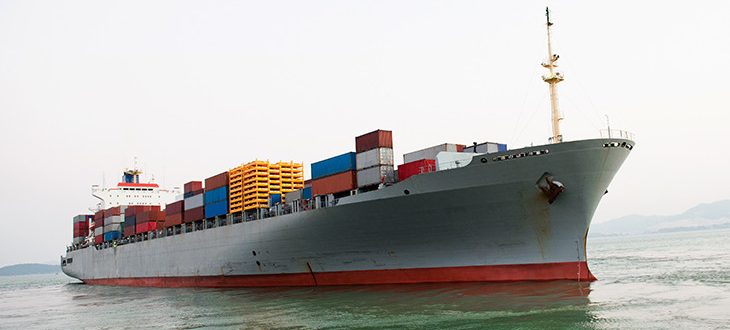Were you aware that fuel saving measures can have a negative effect on the lashing forces on the containers? Olivier van der Kruijs, Risk & Quality Manager and Marine Surveyor at BMT Surveys, shares his experiences from the audits on more than one hundred container vessels last year.
The latest generation of container ships have been designed not only to increase capacity but also to improve energy efficiency and environmental performance. The rise in fuel prices in combination with a continuing pressure on freight rates has forced ship owners and operators to look closely at the amount of fuel being used.
This has resulted in economical steaming and other fuel efficiency measures. Fuel efficiency monitoring can be achieved by a number of ways; for example, by using computer and communication software which monitors and analyses the ship’s performance and operational parameters in real time.
The results of these analyses may then suggest, for example to change speed, trim and draft. The optimal trim, varies with speed, displacement, weather and underwater hull shape and can be a significant factor in saving fuel. One study suggested that fuel consumption could be reduced by as much as 5% using this technology. However, as an unwanted side effect, this fuel saving method may increase the calculated dynamic forces to the containers and lashings, possibly exceeding maximum permissible levels.
As part of its extensive range of services to the shipping industry, BMT also carries out regular inspections of container ships. A point of attention during these surveys is the requirement to review the lashing computer data and establish if there is a situation on board whereby container lashing forces are exceeded.
As regards maximum permissible forces, there are limitations resulting from the strength of the container itself. Those limitations are stipulated in ISO standards (ISO 1496). It is important to appreciate that there is no safety margin on these limits. Theoretically, a container may thus distort as soon as these force limits are exceeded. This is different for the safe working loads on the lashings, which do have a safety margin.
Usually, for the preparation of a stowage plan, stability and lashing forces are calculated. These calculations take into account the usual changes to stability as a consequence of expected fuel consumption or changes to the ballast water quantity, whilst sailing. It has become apparent that during the voyage, the ship is sometimes instructed by the owners (or the charterers) to make adjustments to improve fuel efficiency.
These (unplanned) adjustments of draught and trim increased the GM (metacentric height) at various occasions and, as a result, also the dynamic forces acting on the containers and lashings. This could lead to a situation whereby the ship left port with the calculated lashing forces being within design limits, but exceeding the limits at a later stage when the trim adjustments were made.
For vessels enjoying a voyage with good weather, exceeding the designated maximum lashing forces is unlikely to result in any damaged cargo. However, if the ship was to encounter its “design motions criteria”, damage to the container stacks and cargo could occur, thus as an indirect result of saving fuel.
Source: BMT Group
In the outbreak, I was frank with you propecia before and after has changed my life. It has become much more fun, and now I have to run. Just as it is incredible to sit.

































































